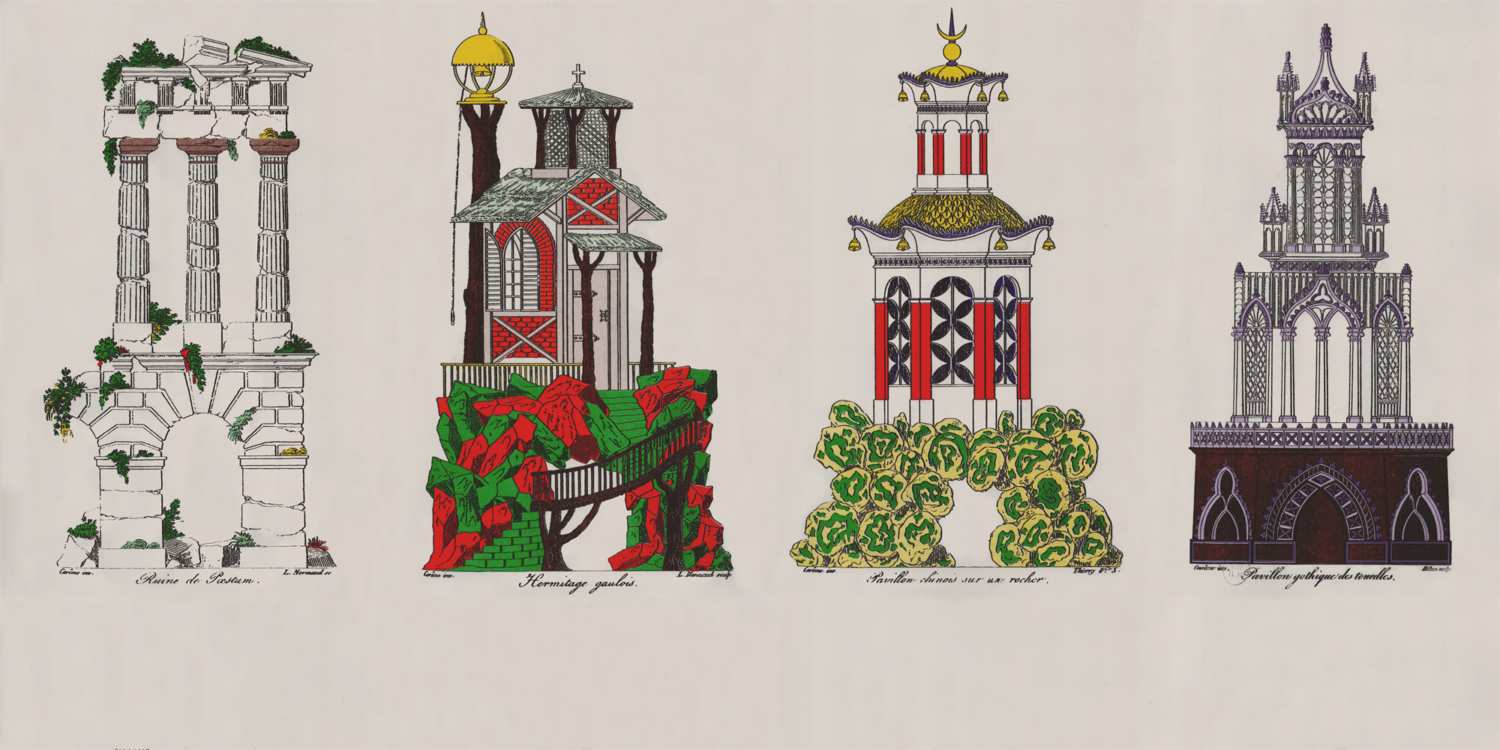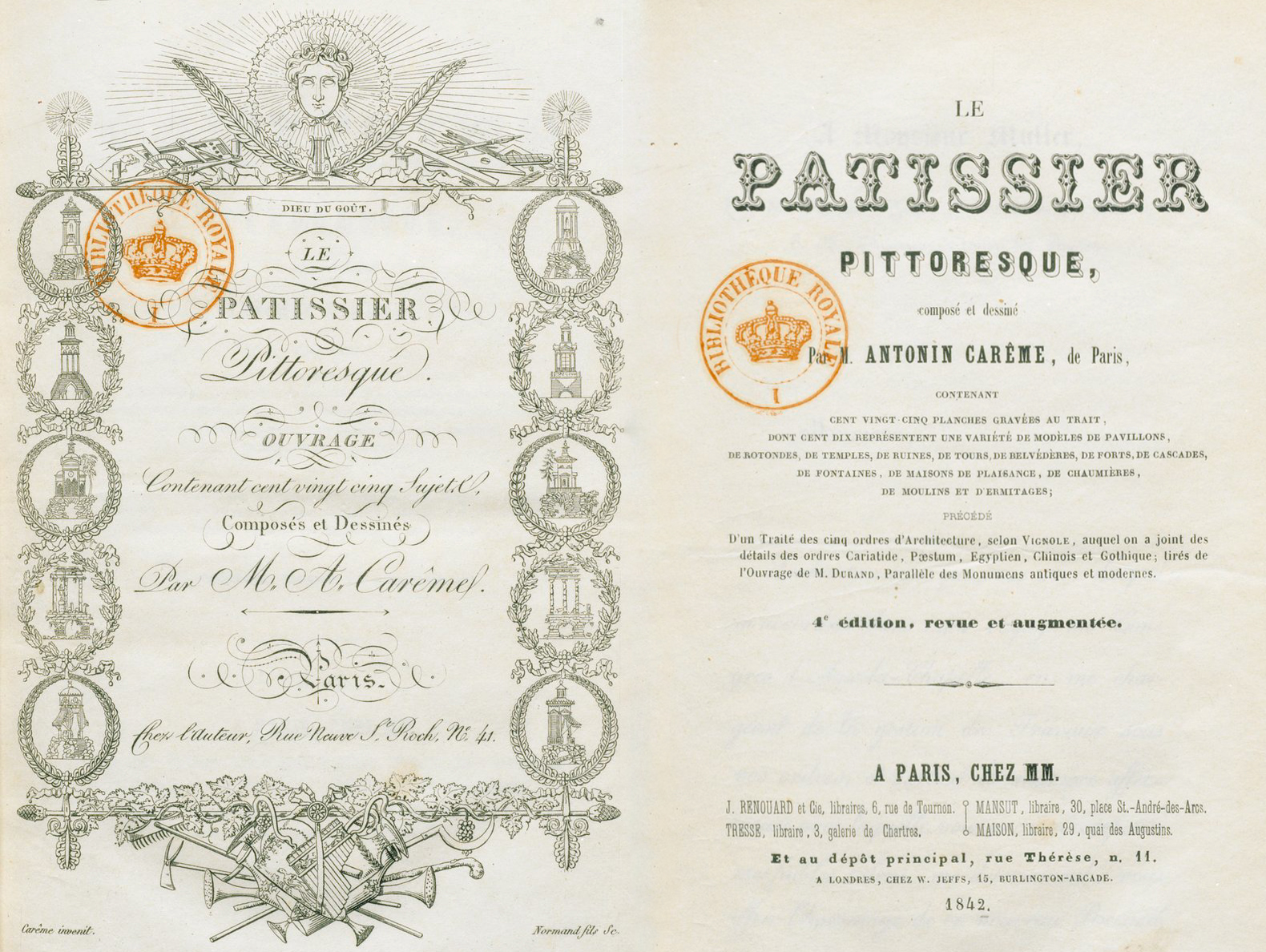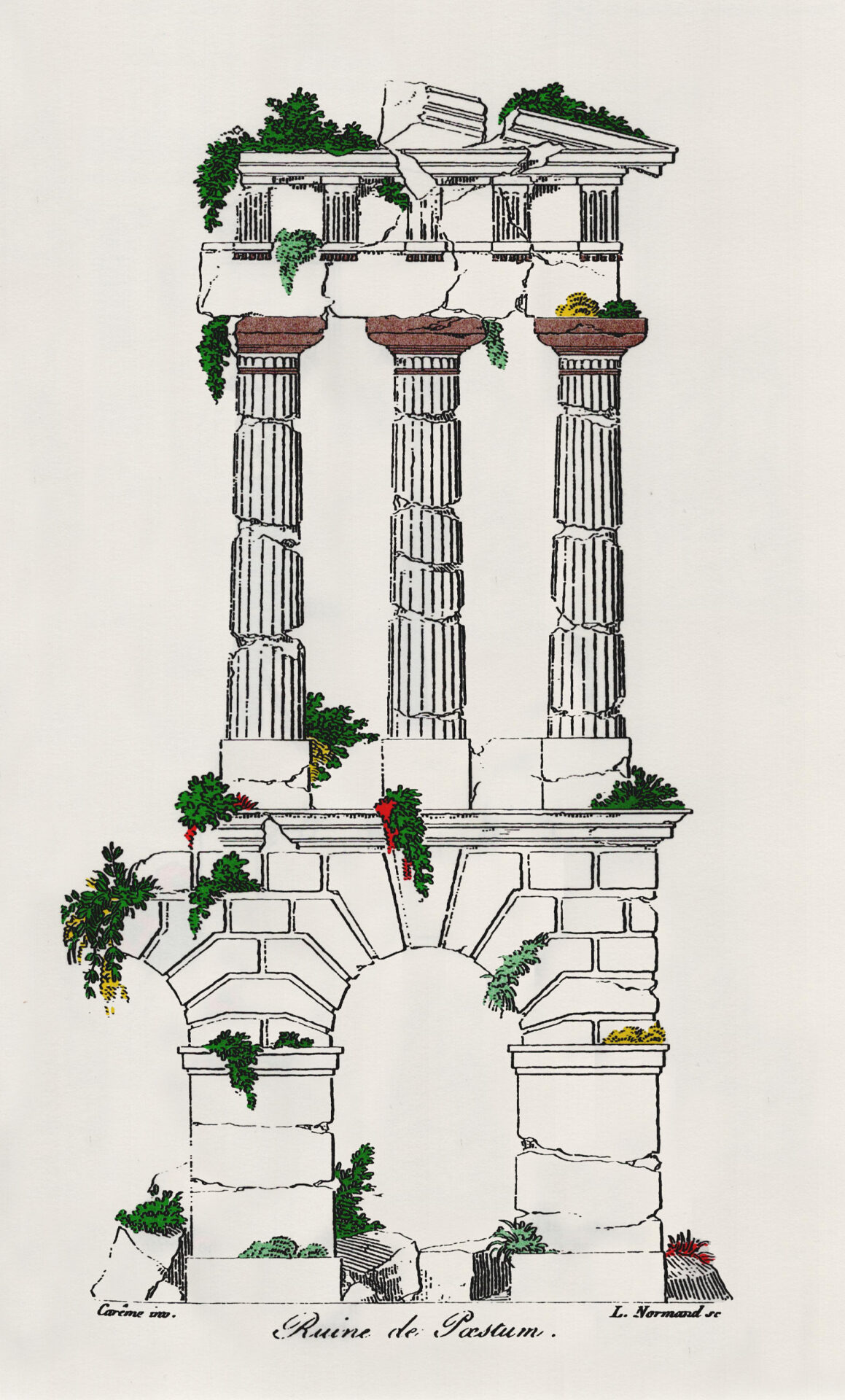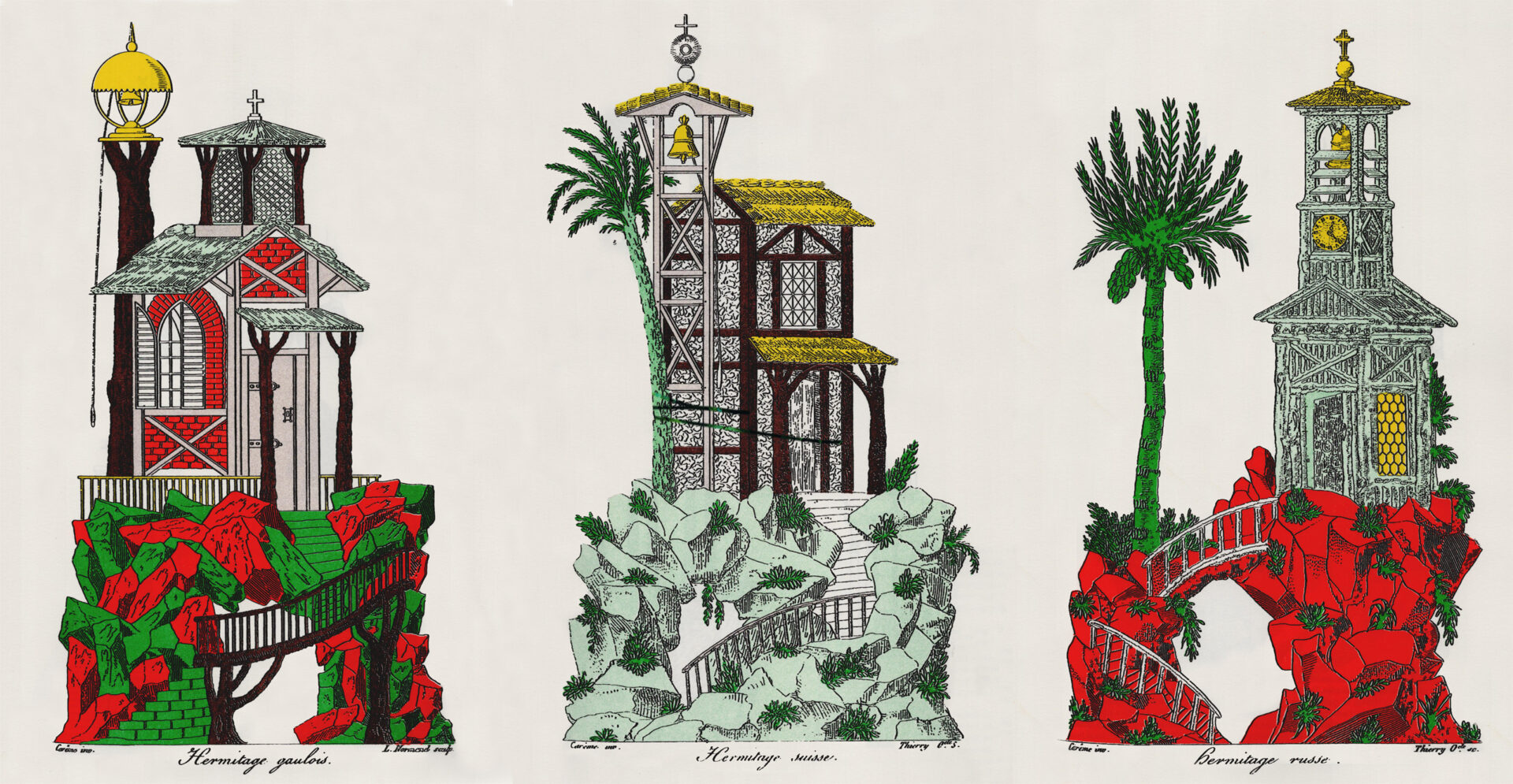From the scrapings in the bottom of the sugar pan, Antonin harvested warm, malleable sugar and fashioned it, like almond paste, into plinths and swags, column tops and pedestals. Next, he took tongs to the burning coals and, seating himself at the main table, started to assemble his Grecian temple, his Sultane à la Colonne, by burning the sugar ends, till they blistered against the coals in pin-sized bubbles, pressing each part to the blistered side of another, and holding for the two seconds of adhesion. Voilà! Plinth to column. Column to architrave. Architrave to dome. Dessert.
— Excerpt from Ian Kelly, Cooking for Kings
Les beaux-arts sont au nombre de cinq: la peinture, la sculpture, la poésie, la musique, et l’architecture, dont la branche principale est la pâtisserie.
The fine arts are five in number: painting, sculpture, poetry, music, and architecture, the main branch of which is pastry.
— Antonin Carême
Antonin Carême (1784-1833) was the original chef. He invented the chef’s uniform (the white one with the tall hat), came up with the first genealogy of sauces (rooted in what he saw as the four classics: velouté, béchamel, espagnol and allemande), and through his cookbooks he provided a generation of chefs with one of the first practical guides to running a restaurant kitchen. Oddly enough, he was also a failed architect, who unsuccessfully tried to get Russian Tsar Alexander I to commission him to embellish various buildings in what was then the relatively new Russian capital of St Petersburg.
This scheme wasn’t as harebrained as it sounds. Throughout his career, Carême had excelled at producing elaborate, highly architectural centrepieces for the grand banquets he put together for his aristocratic clients, among them, the Tsar himself, as well as Louis XVIII, George, Prince Regent of England (later King George IV), the financier Baron de Rothschild and the infamous French foreign minister Charles Maurice de Talleyrand-Périgord (better known as Talleyrand).
He had good reason, then, to think he could make the leap from sugar to stucco. But alas, his architectural designs never made as big an impact as his cakes (unless you count that chef’s hat, which is thought to have been modelled on an ionic column). Passed down to us from a series of illustrated recipe books such as Le Pâtissier royal parisien and Le pâtissier pittoresque, the styles he reproduced in his centrepieces testified to the remarkable depth and breadth of his architectural knowledge, nurtured since his teens through regular visits to the collection of architectural drawings housed in the print room of the Bibliothèque Nationale.
It would be easy to challenge that quote in the epigram (frequently attributed to Carême but hard to trace back to a specific primary source), where the chef counts architecture among the five fine arts (debatable) and establishes pastry as architecture’s principal branch (mildly preposterous). Especially as it seems to contradict his own ambitions to transcend pastry and become a fully-fledged architect. Nonetheless, there is still something pretty interesting about architecture presented in this way, especially at this time, when the architectural model had yet to become a central component of the craft. Carême’s principal medium gave him much more room to manoeuvre than the architects he sought to emulate. This meant he left behind a vast and eclectic body of work, demonstrating the whole gamut of influences that the architectural field was drawing upon at that time, both from the ancient past and from far-flung corners of the globe. As a result, this body of work also offers us an unusually comprehensive case study of what architectural historian Manfredo Tafuri has described as the “crisis of values” that architects began to experience at the end of the 18th Century when they struggled to come to terms with a new capitalist form of urban development that reduced all aesthetic considerations to the question “how much?” (to paraphrase Marx and Engels in The Communist Manifesto). Their response, as Tafuri details in his seminal work Architecture and Utopia was “romantic eclecticism” an extremely theatrical form of architecture in which each individual work was meant to stand as a coherent object independent from what he calls “technology’s universe of precision”. At the very moment when architecture was becoming more and more about creation for wealthy clients, they reached into the distant past and cribbed styles from “the Orient” in a bid to reinforce architecture’s separation from the terrestrial plane and distract from a prevailing social reality that had stripped their art (all art, in fact) of its sacred aura. It was a heroic failure, but a failure nonetheless.
Details of the chef’s early life are somewhat sketchy because records of his family were torched during the Paris Commune of 1870 and also because he was a bit of a storyteller. However, according to a biography written by Ian Kelly, he appears to have been born in 1783 as the 16th of Marie Jeanne Pascal and Jean Gilbert Carême’s 24 children. Around the age of ten, his parents abandoned him to the streets of Paris amid the tumult of the French Revolution, where he was picked up a few months later by an unnamed chophouse cook, and promptly put to work as a kitchen skivvy in return for room and board (while it’s an origin story worthy of Hollywood, some of this does seem a little too good to be true: his abandonment on the streets of Paris and subsequent rescue by, of all people, a cook, also his name, “Carême”, evocative, as it is, of lent and fasting, but also carnival and crème caramel… as Talleyrand is quoted as saying of Carême, he was “more the child of his time than the child of his own father”).
Things become a bit less sketchy a few years later when the teenage Carême found further work as an apprentice to the famous pâtissier Sylvain Bailly, who kept a shop near the Palais-Royal. By the age of 17, he had become Bailly’s premier tourrier and was beginning to make a name for himself with his elaborate window displays, featuring wildly inventive architectural forms (precursors to the aforementioned centrepieces) made mostly from a combination of pastry, biscuit, marzipan, sugar-paste and spun sugar and inspired by his twice-weekly study of architectural textbooks at the nearby Bibliothèque Nationale. These window displays quickly drew the attention of Talleyrand, who gave Carême his big break and eventually came to depend on the chef as a culinary vehicle for his grandiloquent form of diplomacy.
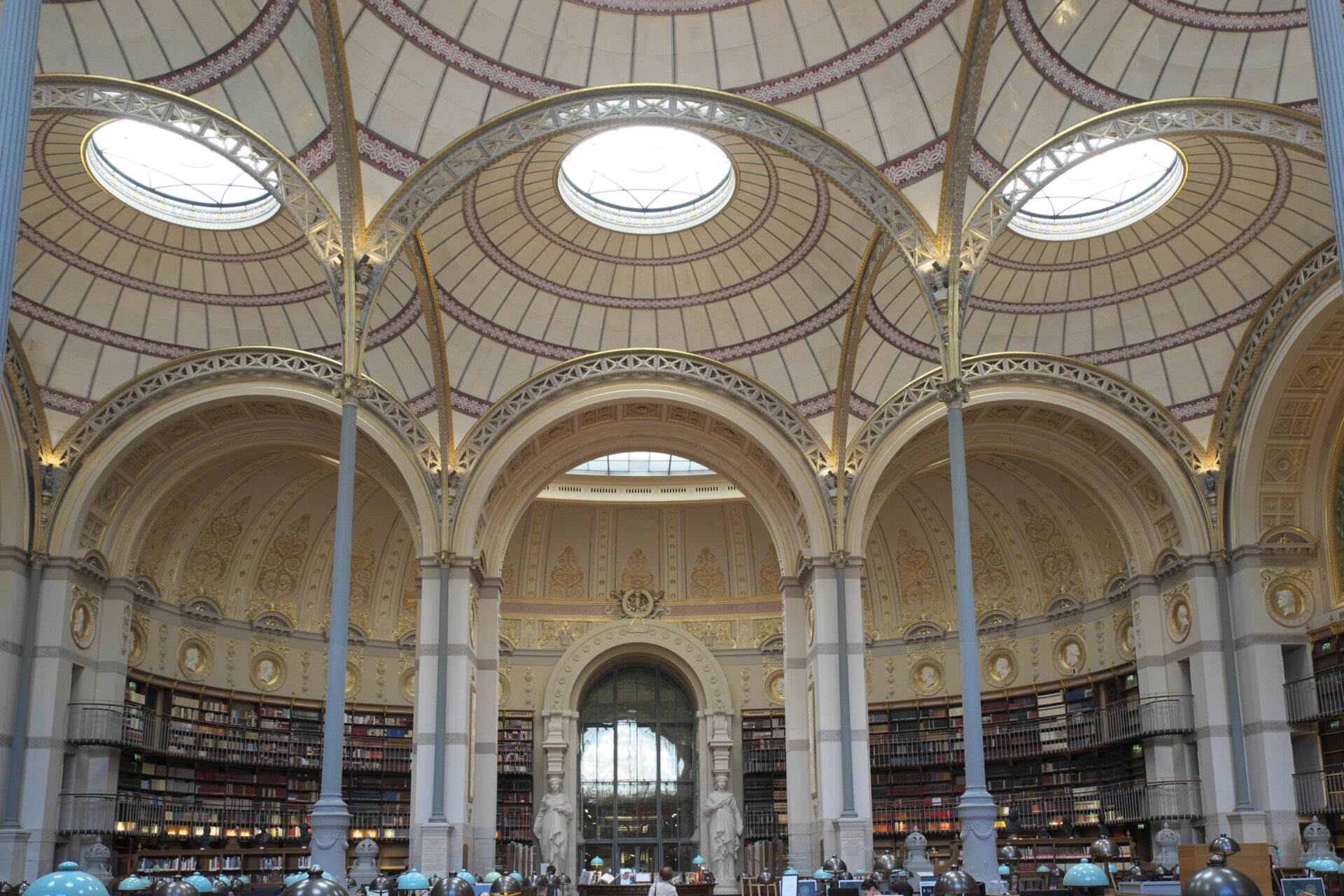
The Bibliothèque Nationale today
GFreihalter/Wikipedia
When Carême began visiting the Bibliothèque Nationale, the library had, just ten years before following the French Revolution, had its ownership transferred from the French king (it had hitherto been called the Bibliothèque du Roi) to the French people. In the following years, the collection swelled from 300,000 books to nearly a million, thanks to the seizure of the private collections of many aristocrats and also Napoleon’s ruling that the library should possess every book in France (which entailed forcing local libraries to make a like for like swap of any book they possessed which was not held by the Bibliothèque Nationale). All this brought to the library a lot of architectural knowledge already gathered from the aristocrats who went on “Grand Tours” of the Orient, visiting, for instance, the recently rediscovered cities Herculaneum and Pompeii and the monuments of the Greek islands and mainland.
That the bourgeois revolutions were, by equal turns, earth-shattering and highly limited is already evident from Carême’s story. On the one hand, this extremely underprivileged yet brilliant artist was able to access knowledge that had never before been available to people like him. But on the other hand, he translated this knowledge into works that could only be accessed by the richest people in society: the monarchs and extremely wealthy aristocrats who survived after those few shaky decades of revolution. This was the same predicament that architects faced at the time, and still face to this day: try as they might, they can’t escape the problem that if they want to make objects that are purely aesthetic, they have to find someone willing to pay for it.
Besides using his days off to visit the Bibliothèque Nationale, Carême would also sometimes make the trek to the aptly-named Désert de Retz, a park just outside Paris that featured various architectural follies designed by its aristocratic owner François Racine de Monville in the decade just preceding the French Revolution. The architectural folly is certainly the most obvious analogue to Carême’s cakes since both were/are essentially created for the specific purpose of decoration. Often found in the corners of gardens and parks, follies tend to have some far-fetched backstory attached to them, so as to give a sense that the visitor has stumbled upon some hidden treasure, thereby investing the surroundings with a sense of ancient provenance. This quality of fabricated history is also reflected in the kinds of architectural styles that follies tend to emulate, which are demonstrated in the list of structures in the Désert de Retz. While only 10 structures now remain, the 1785 plan for the garden lists, among other things: a ruined column, a ruined Gothic church, a Chinese house, a hermitage, an orangery, an obelisk, a tomb, a pyramid icehouse, a Tartar tent, several themed temples and an “Isle du Bonheur” (Isle of Happiness).
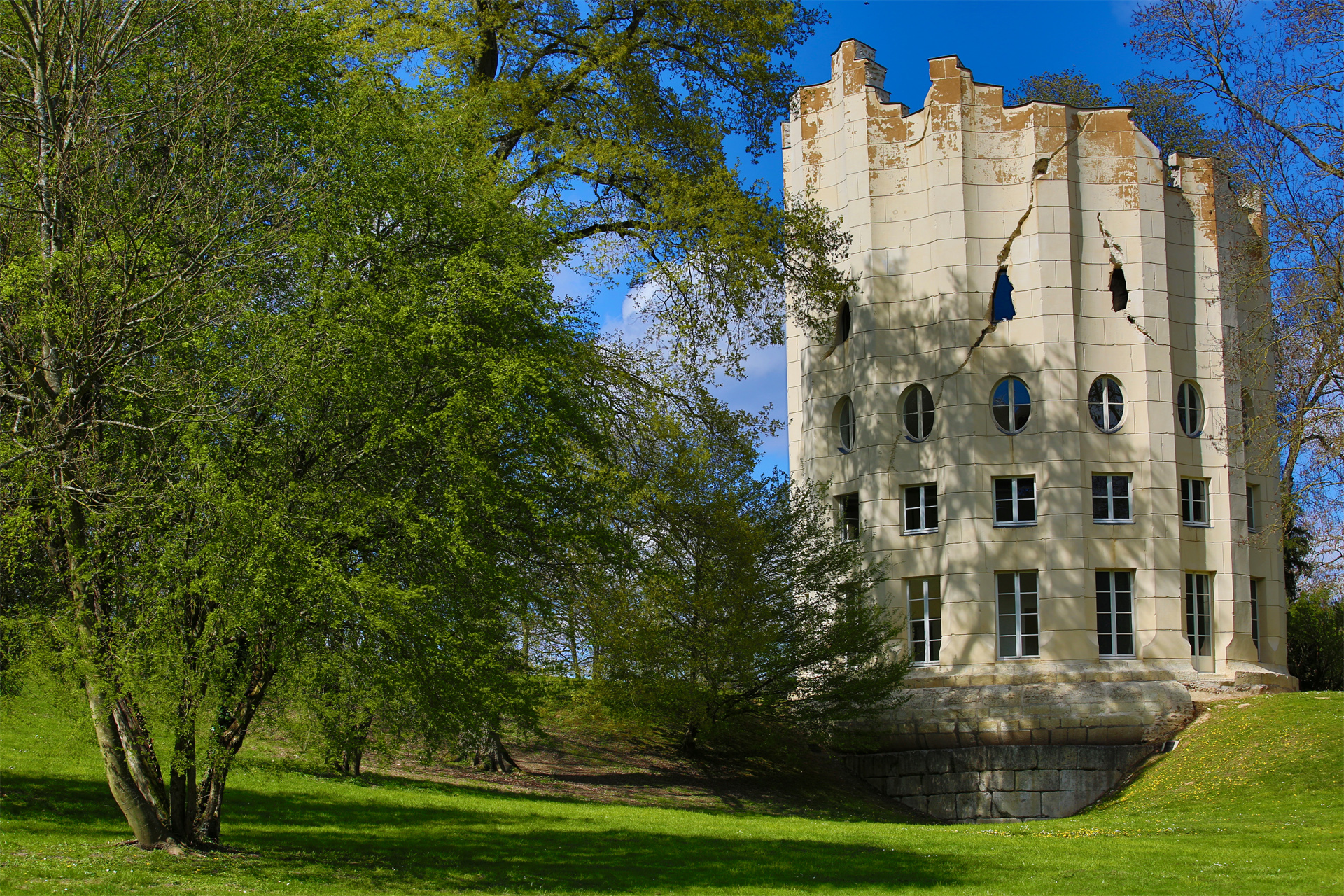
Desert de Retz
Département des Yvelines/Flickr
As illustrated in Le Patisserie pittoresque, Carême’s work is clearly indebted to this garden. The book includes cake designs such as the “Pavilion gothique,” “Pagode chinois,” and “Belvédère égyptien”. It also features some fantastic emulations of the kinds of follies that littered country gardens at the time. Take for instance his “Ruine de Poestum”, where he recreated a ruin of a Greek temple, with cracked columns, entablature and pediment, all sitting on top of a rocky outcrop, with smatterings of moss giving the impression of a cake long since lost to the elements. Also noteworthy in relation to the park are Careme’s designs for Swiss, Russian and Gaulish hermitages (“ermitage suisse”, “ermitage russe” and “ermitage gaulois”), which featured wooden frames made of chocolate-covered icing, and, in the case of the Swiss and Russian versions, a gate roof supported by a palm tree with both the trunk and leaves coloured pale green.
The architectural styles celebrated by Monville and Carême are either of the past or far beyond the reach of contemporary Europe. It was very much in tune with the kind of output emerging from the formal architectural field. Again we see here a kind of opening-up that was very limited in scope. Why, after such a dramatic rupture with the feudal order, was the prevailing architectural aesthetic essentially an eclectic array of reproductions drawn either from classical antiquity or from far beyond the stage on which all this change was happening? Or, put more simply, why was it anywhere but the here and now (or, from our perspective, the there and then)? Karl Marx offers a pretty neat explanation in his pamphlet “The Eighteenth Brumaire of Louis Bonaparte”: “…in the austere classical traditions of the Roman Republic, the bourgeois gladiators found the ideals and the art forms, the self-deceptions, that they needed to conceal from themselves the bourgeois-limited content of their struggles and to keep their passion on the high plane of great historic tragedy.” In other words, the bourgeois revolution that Careme lived through was pretty mundane in its fundamental aims (as Marx puts it elsewhere in the text, these were “the production of wealth and in peaceful competitive struggle”), but it needed a sense of drama to win people over to the cause. Enter the aesthetics of classical antiquity, not just in France but also in the newly independent United States (both places which seem to have been largely unable to escape the aesthetic ever since).
This goes some way to explaining the tendency, but Manfredo Tafuri gives a slightly more precise explanation. He attributes the overwrought nature of nineteenth-century architecture to the “shock” induced by the modern city, seeing its romantic eclecticism as “the only proper answer to the multiple disintegrative stimuli induced by the new physical environment configured by technology’s universe of precision.” Put another way, the architect’s status was greatly diminished by “technology’s universe of precision”. Like “the physician, the lawyer, the priest, the poet, the man of science” listed by Marx and Engels in the Manifesto, this new economy had stripped architects of their halo and converted them into paid wage labourers. Except, at this point, architects hadn’t yet worked out how to make their labours worthy of a wage in the new economy, and so they escaped into flights of fancy, creating objects which were conspicuously separate from the prevailing social reality of the time.
Carême, however, did have an escape route. He was a cook first, and a famous one at that. There was money in this. There was also money in the books he published. According to biographer Ian Kelly, Carême earned around 20,000 francs annually in royalties from his collected works by 1832. Plus, while his services were expensive, his products weren’t nearly as difficult to pull off as a building, requiring minimal reliance on a specific pool of labour and relatively little capital investment, meaning they could be commissioned in great quantity. Carême was living the architect’s dream. He could actually finish hundreds of his works.
Also, even more than his architect contemporaries, Carême managed to make the necessary ambiguity of the romantic eclectic even more abstract and value-free by essentially making a model of what was already a model of a pre-capitalist value. This is his major innovation: to take the facsimile of meaning that 19th Century architects produced and create a facsimile of that, thereby reifying the architectural form as an ontological value-in-itself and the cake as an indicator of this. Interestingly, though, his cakes are also immediately and destructively consumptive in a way architecture still is not, thus making his cakes, in a sense, the perfect commodity.
But evidently, it wasn’t enough for him. Like many a self-made man, he was locked in a futile effort to shake off the trappings of his humble origins. He wanted to be taken seriously as an architect. Unfortunately, his Projets d’architecture pour I’embellissement de Sainte Petersbourg never reached Russia, the ship carrying it sank on the way. While it’s tempting to wonder what might have happened had his drawings actually reached their destination, it’s difficult to see the Tsar taking him up on his proposals to embellish St. Petersburg. Even if he was the best cook, he was still a cook to people like the Tsar (and he was very much too early to enjoy Western culture’s ultimate veneration of the celebrity chef). Also, leaving aside his failure to woo Alexander, his architectural books still sold terribly. This was partly because the books themselves were really expensive, but also because architecture wasn’t bankable. His audience was more interested in learning how to run a kitchen and reading the gossip he dished out about his aristocratic benefactors.
On measure, it was probably a good thing that his architectural ambitions quite literally ran aground. As Tafuri explains, after it recovered from the initial shock of its loss of status, architecture only had two other moments in the sun before it was forever relegated to a rearguard position in society: first, it realised in concrete form the unsatisfied needs that were first identified by the artistic avant gardes of the late nineteenth and early twentieth century; and second, through movements such as De Stijl and Bauhaus it offered up “the Plan” to the capitalist metropolis in the early twentieth century. After that, the position of the architect was peripheral. Which is to say, he wouldn’t have found the transcendence he coveted. Architecture, like all other occupations, was becoming just as subordinate to clients, rich benefactors and bosses as every other aesthetic pursuit. It may be better at hiding this reality with fancy ideological claims and technical jargon, but ultimately its halo vanished centuries ago.
Carême’s untimely death at the age of 48 was most likely brought about by years spent inhaling carbon monoxide in stuffy charcoal-fumed basement kitchens (a fate all too common in these early stages of the industrial revolution). In a sense, it was death by architecture. Proof, as much as anything else said here, that he should have been more cautious about switching careers. Rather than fancy embellishments of St Petersburg and Paris, his cakes are his legacy and (another couple of great Tafurisms incoming) in their “sublime uselessness” they are about as close to “pure architecture” as it’s possible to get in our present economic system. This is why, ultimately, Carême and his cakes are so loveable.
The images of Antonin Careme’s centrepieces are taken from Adel Cersaque’s project to colourise a selection of images from Le patissier pittoresque, for which the author wrote an earlier version of this essay. The cover image is a combination of Adel Cersaque’s colourised images and their equivalents in the original book. The book is available for purchase through the Jan van Eyck Academy printing and publishing lab.
